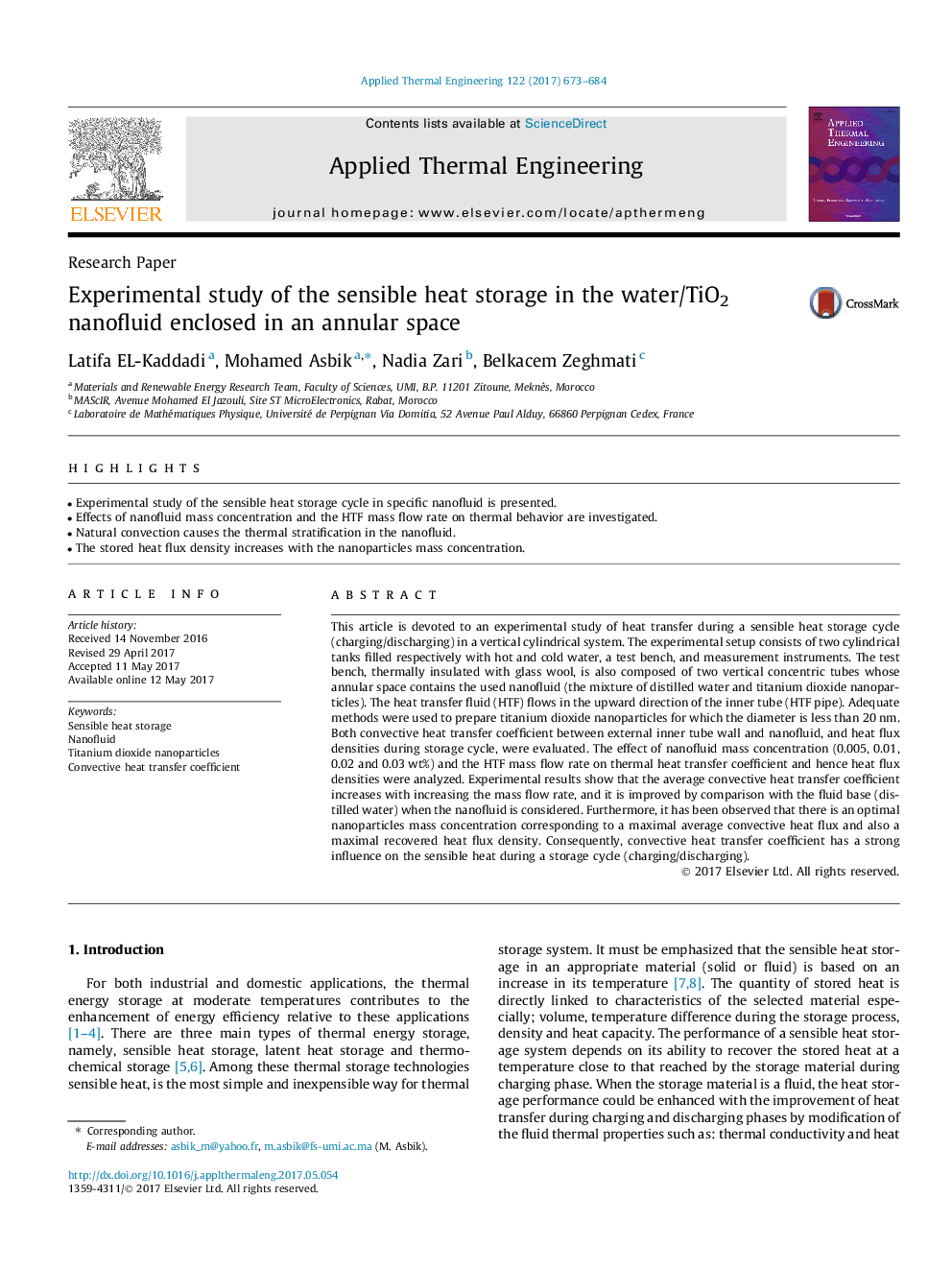| Article ID | Journal | Published Year | Pages | File Type |
|---|---|---|---|---|
| 4990958 | Applied Thermal Engineering | 2017 | 12 Pages |
Abstract
This article is devoted to an experimental study of heat transfer during a sensible heat storage cycle (charging/discharging) in a vertical cylindrical system. The experimental setup consists of two cylindrical tanks filled respectively with hot and cold water, a test bench, and measurement instruments. The test bench, thermally insulated with glass wool, is also composed of two vertical concentric tubes whose annular space contains the used nanofluid (the mixture of distilled water and titanium dioxide nanoparticles). The heat transfer fluid (HTF) flows in the upward direction of the inner tube (HTF pipe). Adequate methods were used to prepare titanium dioxide nanoparticles for which the diameter is less than 20Â nm. Both convective heat transfer coefficient between external inner tube wall and nanofluid, and heat flux densities during storage cycle, were evaluated. The effect of nanofluid mass concentration (0.005, 0.01, 0.02 and 0.03Â wt%) and the HTF mass flow rate on thermal heat transfer coefficient and hence heat flux densities were analyzed. Experimental results show that the average convective heat transfer coefficient increases with increasing the mass flow rate, and it is improved by comparison with the fluid base (distilled water) when the nanofluid is considered. Furthermore, it has been observed that there is an optimal nanoparticles mass concentration corresponding to a maximal average convective heat flux and also a maximal recovered heat flux density. Consequently, convective heat transfer coefficient has a strong influence on the sensible heat during a storage cycle (charging/discharging).
Keywords
Related Topics
Physical Sciences and Engineering
Chemical Engineering
Fluid Flow and Transfer Processes
Authors
Latifa EL-Kaddadi, Mohamed Asbik, Nadia Zari, Belkacem Zeghmati,
